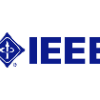The recently released IEEE 802.15.6 standard specifies several physical (PHY) layers and medium access control (MAC) layer protocols for variety of medical and non-medical applications of Wireless Body Area Networks (WBAN). The medical applications of WBAN has several obligatory requirements and constrains viz. high reliability, strict delay deadlines and low power consumption. The standard IEEE 802.15.6 MAC scheme is not able to fulfil the all requirements of medical applications of WBAN. To address this issue we propose an IEEE 802.15.6-based MAC scheme that is the modification of superframe structure, user priorities and access mechanism of standard IEEE 802.15.6 MAC scheme. The proposed superframe has three access phases: random access phases (RAP), manage access phases (MAP) and contention access phase (CAP). The proposed four user priorities nodes access the channel during RAP using CAMA/CA mechanism with a large value of contention window. The proposed MAC scheme uses RTS/CTS access mechanism instead of basic access mechanism to mitigate the effect of hidden and expose terminal problem. Moreover, we develop an analytical model to evaluate the performance of proposed MAC scheme and solve the analytical model using Maple. The results show that the modified IEEE 802.15.6 MAC scheme achieve the better performance in terms of reliability, throughput, average access delay, energy consumption, channel utilization and fairness compared to standard IEEE 802.15.6 MAC scheme in E-health applications.
翻译:最近公布的IEE 802.15.6号标准标准标准标准机体区网(WBAN)的医疗应用有若干强制性要求,限制了高可靠性、严格延迟期限和低电耗等。IEEE 802.15.6号标准机组无法满足WBAN医疗应用的所有要求。为了解决这个问题,我们提议了一个基于IEE 802.15.6号基于IEE 802.15.6号标准的机组(MAC)的机组(MAC),这是对标准IEE EE 802.15.6号机组的超级框架结构、用户优先事项和公平性机制的修改。拟议的超框架有三个准入阶段:随机访问阶段(RAP)、管理准入阶段(MAP)和争议接入阶段(CAP)。提议的IEE 802.15号机组标准系统无法满足WBAN的所有医疗应用要求。为解决这个问题,我们提议一个基于ITS/CTS访问机制,而不是基本准入机制,以减轻隐蔽和暴露终端问题的影响。此外,我们制定了一个分析模型,用以评价80-MEEA系统平均利用80号机组的机组系统,通过改进了80项标准使用。



